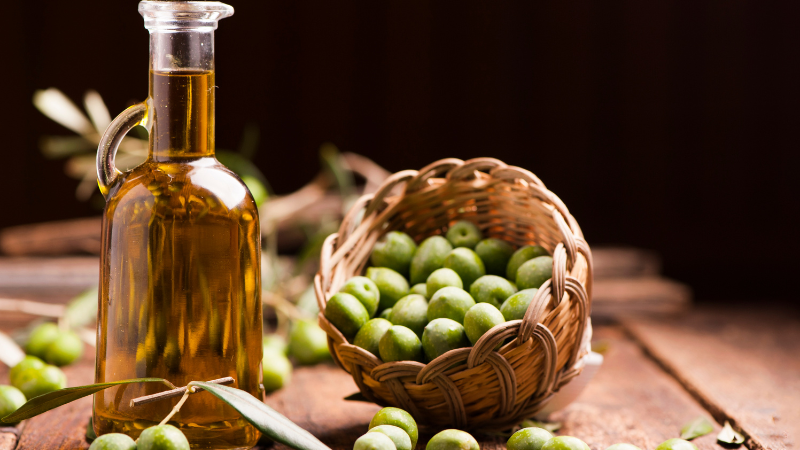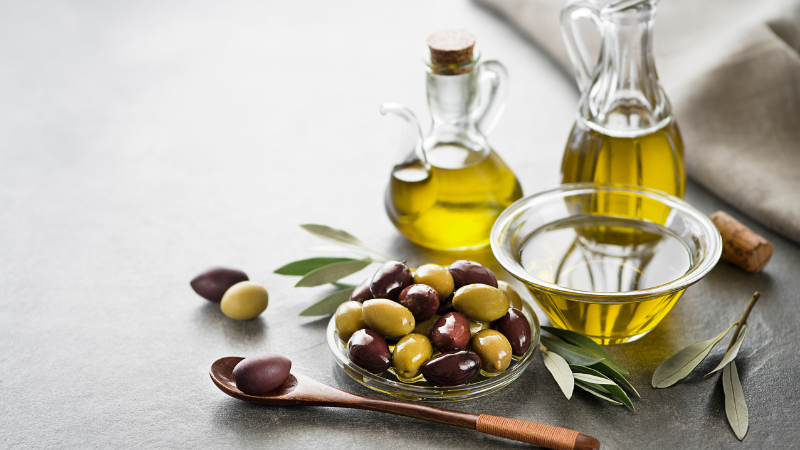How Are Kalamata Olives Made?
Although generally described as black olives, Kalamata olives have a dark purple colouring. Larger than other olives, fruit from this variety have a plump, almond shape. They are widely regarded as one of the healthiest olive varieties available today. But, how are Kalamata olives made?
That may sound like a ridiculous question because obviously, they are grown, not made, but as you will discover, there is a long process involved with getting these delicious olives full of health benefits from the tree to your kitchen.
Where do kalamata olives come from?
For olives to qualify for the name Kalamata olives, they need to be grown in the Southern Greek Peloponnese peninsula region.
In the Messina valley, to be precise, close to Kalamata, the town where they take their name from.
They are the fruit of the Olea Europaea olive tree and there is a long process involved between growing this variety and harvesting them for use in olive oil and as table olives.
How are Kalamata Olives Grown and Picked?
Olive trees need to be grown for at least five years before they will produce fruit that is ripe for harvesting. There are three different ways olive harvesting is carried out –
- By machine or with the use of a stick to shake the olive trees to drop the ripe fruit
- Leave the fruit until they are so ripe they naturally fall from their olive branches
- By hand
Although the first two options are more cost-effective, they are problematic in other ways. For one thing, not all olive trees ripen at the same time.
This means that many of the olives collected could be over or under-ripe. Besides, rough handling can bruise the olives, affecting their quality.
That is why the majority of olive growers in Greece opt for handpicking Kalamata olives.
How are Kalamata Olives Stored?
Once Greek workers have picked the ripe olives from the trees, the next stage in the process of getting them to your kitchen cupboards is processing them to make olive oil or preparing them as table olives.
Like most other olive varieties, Kalamata olives have a stone in the centre.
Generally speaking, to help preserve their shape and aesthetic appeal as a table olive, these olives are not pitted.
However, they do have to go through a debittering process, because fresh off the tree Kalamata olives do not have that sweetness that they are known for, yet.
What are Kalamata Olives Soaked In?
There are two different methods used in debittering Kalamata olives, both involve soaking them for a specific length of time until they are ready. Let’s consider each brine curing process separately.
The first option starts with the freshly picked and ripe olives being soaked in a brine solution for seven days.
Once they are considered ready for consumption, they are then packed into jars with brine, wine (normally red) vinegar, lemon slices and olive oil.
The second option is a much longer process that involves slitting each olive and then placing them into 10% saltwater.
The fermentation process is what debitters them. Although longer than the above method, this only takes around three months to complete.
Which is nothing compared to Sicilian olives that are normally soaked in lactic acid and salt for as long as one year before they are ready for consumption.
Why Are Kalamata Olives So Expensive?
The two different methods utilised in making bitter Kalamata olives, cured olives, helps to explain why they are generally more expensive than the average black olives and green olives from Greece.
There is also the fact, as noted earlier, that they need to come from a specific Greek region to truly qualify as Kalamata olives. This level of exclusivity increases their price.
Summary
There’s no doubt about it, the Kalamata olive is a great tasting olive.
Aside from tasting great, there is a long list of nutrition facts that go hand-in-hand with olives, thanks to the their antioxidant content and the various minerals and vitamins they contain.
This ranges from improving your heart health to reducing your blood pressure and so much more.
It’s easy to take olives for granted. They are just there, aren’t they? On the shelves of speciality stores and grocery stores.
However, now you are a little better clued up on the process involved in getting these olives to you.
Whether you enjoy them straight out of the jar in red wine vinegar, as a tapenade spread or in a delicious Greek salad bowl with Feta cheese, green olives, black olives (other varieties), you hopefully have a greater appreciation of what’s involved.
And if you LOVE Kalamata Greek olives as we do, you have to try our award-winning Iliada Kalamta Olives or our Iliada Kalamata Olive Oil.
Our brands olive oil is 100% traceable, non-blended and hand-picked for the highest quality.



